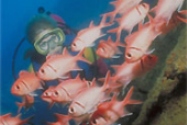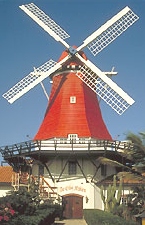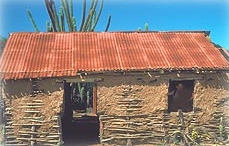|
Beaches
|
|
The southern, leeward coast is lined with beautiful, sparkling white sand and is commonly known as the Turquoise Coast for the colorful tint of the water. There are many secluded
sections of private beach or more popular strips by the hotels. Baby Beach down at the eastern tip is a natural wading pool that is perfect for families with small children. The northern coast is more rugged and
windswept and can be dangerous for swimming. sparkling white sand and is commonly known as the Turquoise Coast for the colorful tint of the water. There are many secluded
sections of private beach or more popular strips by the hotels. Baby Beach down at the eastern tip is a natural wading pool that is perfect for families with small children. The northern coast is more rugged and
windswept and can be dangerous for swimming. |
|
Top
|
|
Diving
|
|
There is plenty of wonderful diving to be enjoyed on Aruba, particularly along its sheltered southwestern coastline. A large number of outstanding
dive sites, some of which are listed below, have been charted, and there are several very good dive operators on the island. Aruba is currently working to preserve the ecological health of its many stunning reefs.
The island's leading ecological groups have begun a number of preservation and educational programs, including the installation of dozens of mooring buoys, a popular reef clean-up program (in which divers are
welcome to participate), and has established a protected underwater park.
Pedernales Wreck (35')
The wreck of the Pedernales, an oil tanker torpedoed by a German submarine during the last World War, is a
paradise for beginning divers. The wreck's several large pieces are spread out between coral formations, making visible the complete wreck cabins, wash basins, lavatories, etc., as  well as the tanker's pipeline system. The wreck of the
Pedernales was cut into three pieces by the U.S. military during the war. The center piece, damaged by the torpedo, was left behind, and the two endpieces were towed to the U.S. and welded together into a
smaller vessel. The new ship was a part of the Normandy invasion fleet. The area around the Pedernales wreck is known for its many types of groupers and its bounty of angel fish. well as the tanker's pipeline system. The wreck of the
Pedernales was cut into three pieces by the U.S. military during the war. The center piece, damaged by the torpedo, was left behind, and the two endpieces were towed to the U.S. and welded together into a
smaller vessel. The new ship was a part of the Normandy invasion fleet. The area around the Pedernales wreck is known for its many types of groupers and its bounty of angel fish. |
|
Top
|
|
Exploring
|
|
De Olde Molen
|
|
This old windmill was first built in 1804 in Holland and then shipped to Aruba piece by piece and reconstructed in 1960. It now features a moderately-priced restaurant that specializes in continental dining. shipped to Aruba piece by piece and reconstructed in 1960. It now features a moderately-priced restaurant that specializes in continental dining. |
|
Oranjestad
|
|
The capital city, located on the southern coast near the western end of the island, is extremely picturesque with its Dutch colonial architecture in
pastel colors. Over the past six years a lot of effort has been spent refurbishing the town and making it attractive for tourists. Along the wharf merchants come to sell fresh fish and produce right off the boats
every morning. The downtown area and the Seaport Village are the primary shopping areas on the island.
Museums in Oranjestad:
Archaeological Museum
Zoutmanstraat 1, Oranjestad
Ancient artifacts, pottery tools, and giant earthen jars of the original Aruban habitants.
Open Mon - Fri, 8 am to 12 and 1pm to 4pm
Numismatic Museum
Zuidstraat 27, Oranjestad.
30,000 historic coins from Aruba and around the world.
Open Mon - Fri, 7.30am to 12 and 1pm to 4pm
|
|
Fort Zoutman And William III Tower
|
|
The oldest building in the country, this Dutch fortress now houses the Historical Museum of Aruba, where Caiquetio artifacts from the
prehistoric past are now on display alongside of remnants from the Dutch colonial period and other items of local interest.
Open Mon - Fri, 9am to 12 and 1.30 pm to 4.30pm
|
|
Bushiribana
|
|
 On the northern coast midway down the island
lie the abandoned gold On the northern coast midway down the island
lie the abandoned gold  mines that were the
center of Aruba's gold rush during the nineteenth century. Nearby sit the ruins of an old pirate castle that some say goes all the way back to 1499, the year that Alonso de Ojeda landed here. mines that were the
center of Aruba's gold rush during the nineteenth century. Nearby sit the ruins of an old pirate castle that some say goes all the way back to 1499, the year that Alonso de Ojeda landed here.
|
|
Hooiberg
|
|
Shaped like a haystack (Hooiberg means Mt.Haystack in Dutch), this mountain looms prominently from the middle of the island. At 541 feet, it is not
the tallest mountain (Mt.Yamanota and Mt.Arikok at 617 feet and 577 feet respectively are both taller), but it is the most accessible. From its peak it is possible to see across to the coast of Venezuela on a clear
day.
|
|
Natural Bridge
|
|
One of the main attractions on the east coast is this coral formation 25 feet high and 100 feet long, which has been carved out by the pounding surf over the course of the centuries. is this coral formation 25 feet high and 100 feet long, which has been carved out by the pounding surf over the course of the centuries. |
|
Boca Prins
|
|
A favorite pastime along the beach here is to join the locals in dune sliding. Sneakers and a strong pair of jeans are definitely encouraged.
|
|
Savaneta
|
|
On the southeastern side of the island is the oldest  town in Aruba, Savaneta, the original capital. This is where the Dutch first settled after re-establishing control of the island
in 1816. Today, it is an active fishing village, but there are still the remnants of an earlier time. The oldest house in Aruba, a cas de torto or mud-hut dating back some 150 years, is still standing here. town in Aruba, Savaneta, the original capital. This is where the Dutch first settled after re-establishing control of the island
in 1816. Today, it is an active fishing village, but there are still the remnants of an earlier time. The oldest house in Aruba, a cas de torto or mud-hut dating back some 150 years, is still standing here.
|
|
Casi Bari And Ayo
|
|
Just north of Hooiberg, a strange geological formation of large diorite boulders looks as if it had just been dumped here in a pile. Scientists
still have not been able to explain how these rocks got here.
|
|
Arikok National Park
|
|
Surrounding Mt.Arikok near the center of the island is a natural preserve which features some of the oldest Arawak drawings as well as trails that
showcase Aruba's great variety of plants and animals like the divi-divi and kwihi trees, rare and exotic cactuses, aloe, tropical flowers, birds, and iguanas. This area is part of the Aruba Natural Preserve which
encompasses 25 percent of the island
|
|
California Dunes "Hudishibana" & Lighthouse
|
|
Named for the offshore wreck of a famous ship, the isolated northwestern tip of the island features some of the most spectacular scenery, with large
rolling sand dunes and an old stone lighthouse that is, however, closed to the public. Nearby there is a restaurant offering refreshments and dining at night. Diving here is recommended only for the most experienced
divers.
|
|
Fontein And Guadiriki Caves
|
|
These caves, which are located in the interior of the island, are where ancient Indian paintings and petroglyphs have been carefully preserved
|
|
Cunucu
|
|
The Papiamento word for 'countryside,' the Cunucu is the rugged, rambling interior of the island which is generally flat but punctuated by all kinds
of vegetation. Small pastel houses fenced in by cactuses line the roadside.
|
|
Daimari
|
|
Near the site of the first gold discovery is a functioning coconut plantation.
|
|
Balashi
|
|
Northwest of the Spanish Lagoon, Balashi still preserves the ruins of an old gold smelting plant that was used during the nineteenth-century gold
rush. Today, this area hosts Aruba's desalination plant where all of the drinking water is produced. While on island, please don't forget to order a Balashi Cocktail.
|
|
Bubali Bird Sanctuary
|
|
More than 80 species of migratory birds from herons  and egrets and cormorants to coots and gulls, skimmers, terns, and ducks nest in and around these two interconnected man-made lakes. and egrets and cormorants to coots and gulls, skimmers, terns, and ducks nest in and around these two interconnected man-made lakes. |
|
San Nicholas
|
|
The second largest city in Aruba, San Nicholas is a modern development that rose with the island's oil boom. The area has a typical British
Caribbean heritage. It is the birthplace of Aruba's Carnival, the third largest after Brazil and Trinidad.
|
|
Top
|
|
Deep-Sea Fishing
|
|
Boats can be chartered to fish for sailfish, marlin, tuna, bonito and wahoo or just to go out watching for dolphins off the coast of Savaneta. The
international White Marlin Competition is held in Aruba each October.
|
|
Top
|
|
Shopping
|
|
The best shopping is to be found in the downtown area of Oranjestad, the capital, but many of the shops have satellite branches in a few of the
larger hotels. Quality merchandise from all over the world, particularly Latin America and Europe, attract many shoppers looking for bargains. Store hours are typically 8 am to 6 pm with a two-hour break for lunch
between noon and 2 pm.
|
|
Top
|